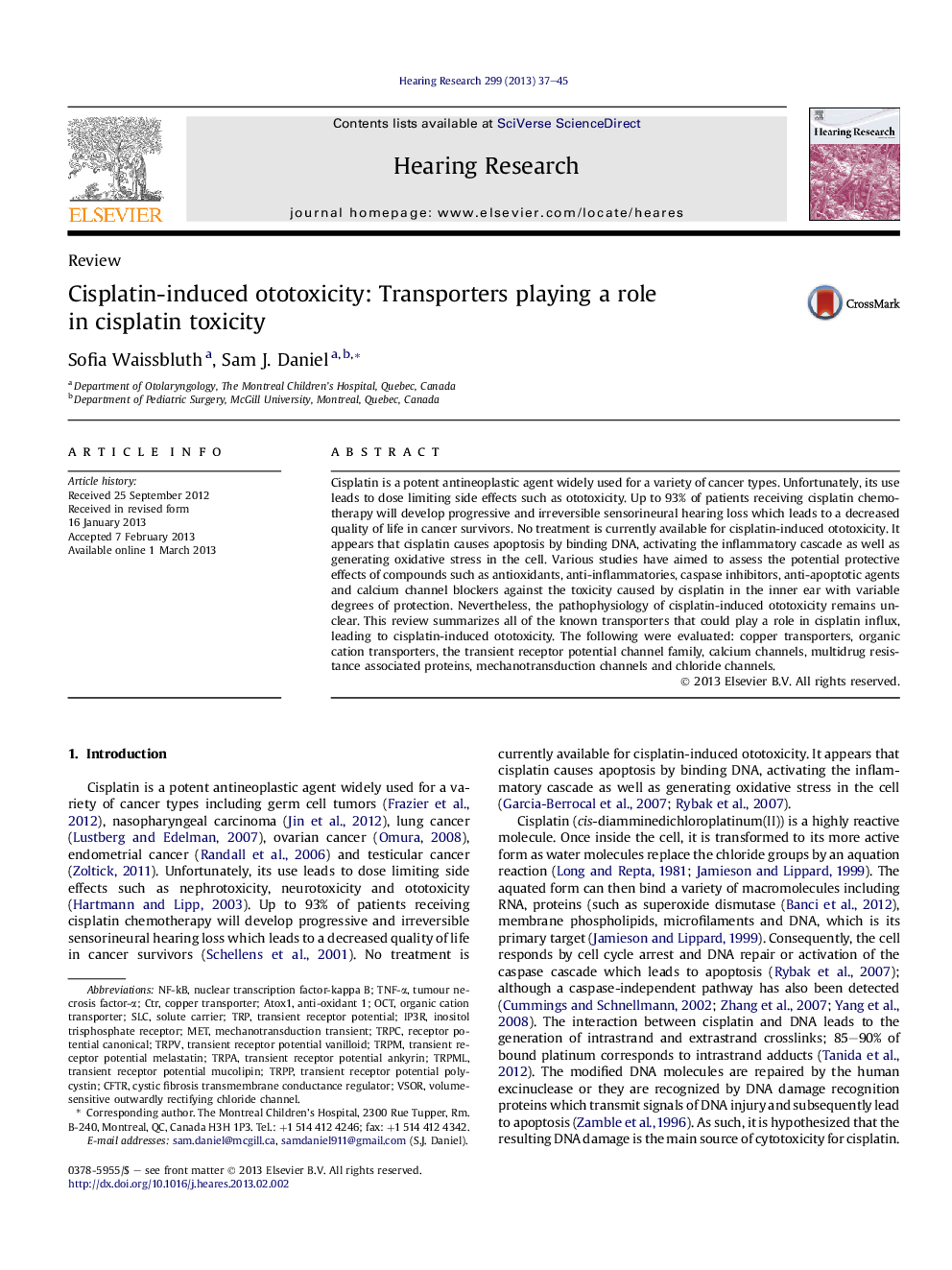| Article ID | Journal | Published Year | Pages | File Type |
|---|---|---|---|---|
| 4355222 | Hearing Research | 2013 | 9 Pages |
Cisplatin is a potent antineoplastic agent widely used for a variety of cancer types. Unfortunately, its use leads to dose limiting side effects such as ototoxicity. Up to 93% of patients receiving cisplatin chemotherapy will develop progressive and irreversible sensorineural hearing loss which leads to a decreased quality of life in cancer survivors. No treatment is currently available for cisplatin-induced ototoxicity. It appears that cisplatin causes apoptosis by binding DNA, activating the inflammatory cascade as well as generating oxidative stress in the cell. Various studies have aimed to assess the potential protective effects of compounds such as antioxidants, anti-inflammatories, caspase inhibitors, anti-apoptotic agents and calcium channel blockers against the toxicity caused by cisplatin in the inner ear with variable degrees of protection. Nevertheless, the pathophysiology of cisplatin-induced ototoxicity remains unclear. This review summarizes all of the known transporters that could play a role in cisplatin influx, leading to cisplatin-induced ototoxicity. The following were evaluated: copper transporters, organic cation transporters, the transient receptor potential channel family, calcium channels, multidrug resistance associated proteins, mechanotransduction channels and chloride channels.
► Increase in ctr1 and decrease in ctr2 causes an increase in intracellular cisplatin. ► Organic cation transporter OCT2 is an important transporter for cisplatin, not OCT1. ► TRPA1 and TRPV1 expression is increased when cells are exposed to cisplatin. ► Roles of TRPA1 and TRPV1 in cisplatin toxicity are poorly understood. ► There is no evidence to suggest cisplatin may enter cells through calcium channels.
